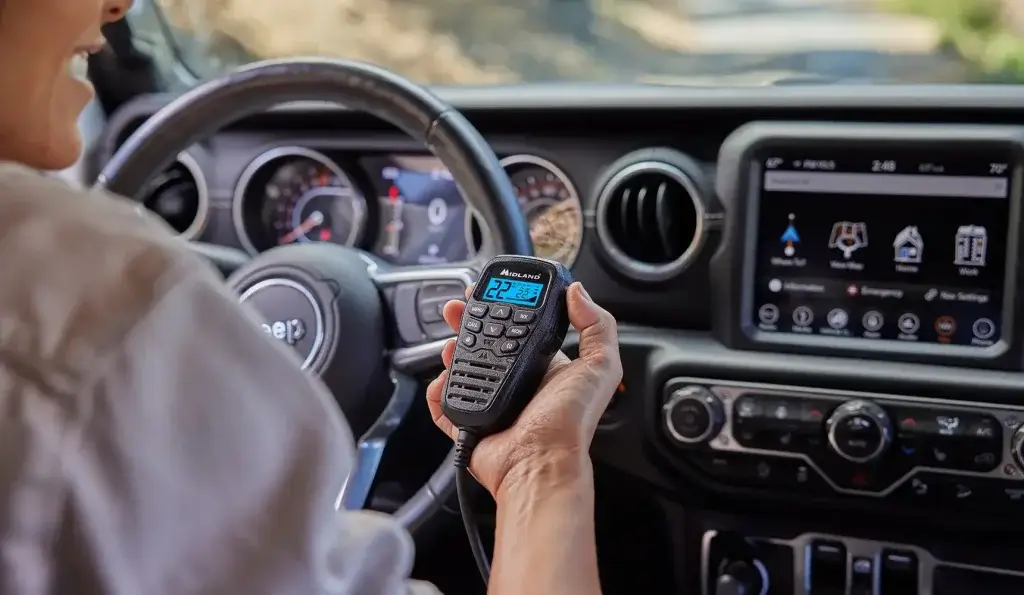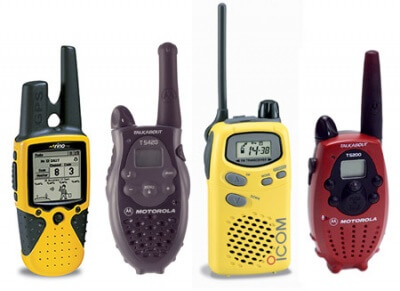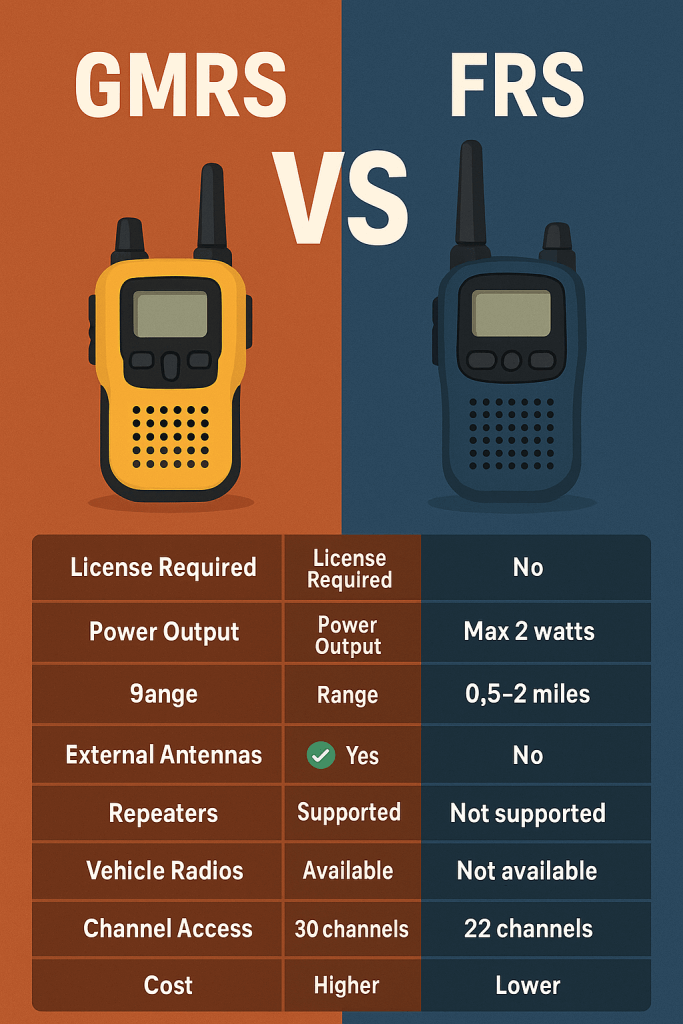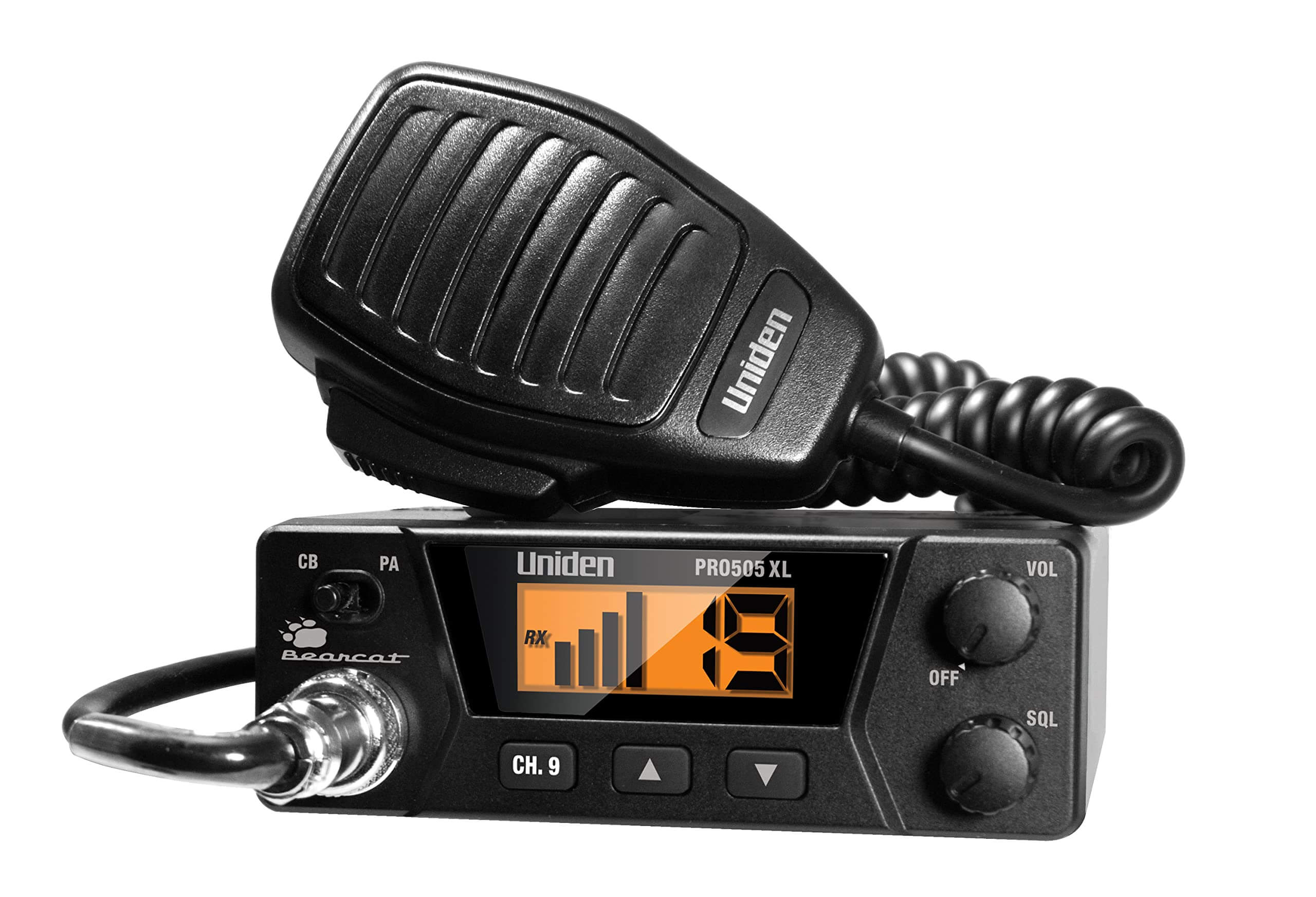When heading off-road, reliable communication is essential — not just for safety, but for coordination, camaraderie, and trail updates. While CB radios were once king, more off-roaders are turning to GMRS (General Mobile Radio Service) and FRS (Family Radio Service) radios for clearer, farther-reaching communication. So, what’s the difference — and which one is better for the trail?
Frequency and Range: GMRS Wins on Distance
GMRS radios operate on higher power (up to 50 watts) and allow the use of external antennas and repeaters. This translates to significantly greater range — often 5 to 25 miles depending on terrain and equipment. Perfect for wide open trails or when you’re spaced out across a convoy.

FRS radios, on the other hand, are limited to 2 watts and built-in antennas, making them best for short-range use — typically less than 1 mile in real off-road conditions. They’re great for casual trail rides where everyone stays close, but they struggle in dense forests, valleys, or large group rides.

Licensing: FRS is Plug-and-Play
FRS radios require no license, making them convenient and affordable for anyone to use straight out of the box. They’re ideal for beginners, families, or one-time use.
GMRS radios do require a FCC license in the U.S., but it’s easy to get — no test needed, just an online application and a small fee (~$35 for 10 years). One license covers your entire family.
Features and Flexibility
GMRS radios offer more channels, better audio clarity, and access to repeaters, which can extend communication across mountainous terrain. They also allow vehicle-mounted units and removable antennas, which drastically improve range and signal strength — critical for serious off-roaders.
FRS radios are usually handheld, compact, and inexpensive. But with fewer features and lower power, they’re limited in challenging terrain or large groups.

Final Verdict: Choose Based on Your Needs
- Choose FRS if: You’re on a tight budget, ride in close quarters, or want something simple and legal for everyone in your group to use immediately.
- Choose GMRS if: You want superior range, plan to outfit vehicles with radios, or often ride in remote or mountainous areas. The minor cost and licensing step are well worth the boost in performance and reliability.
What About CB Radios?
CB (Citizens Band) radios were once the go-to for off-road communication, especially before the rise of GMRS and FRS. While they don’t require a license and still have a loyal following, CBs operate on lower frequencies and are limited to 4 watts of power, resulting in poor range and clarity compared to modern options. CB radios are also more susceptible to interference and lack privacy.
With no repeater support, no channel privacy codes, and bulky antennas, most off-roaders today are switching to GMRS for better performance, range, and ease of use. Simply put — CB still works, but it’s quickly becoming outdated for serious trail communication.

Pro Tip:
Many popular “walkie-talkie” style radios sold in big-box stores are FRS/GMRS hybrids. They may look like high-powered radios but are often capped by FCC rules depending on how they’re used. Know what you’re buying and use it within legal guidelines.
📡 GMRS vs. FRS Radio Comparison for Off-Roading
| Feature | GMRS (General Mobile Radio Service) | FRS (Family Radio Service) |
|---|---|---|
| License Required | ✅ Yes – FCC license (no test, ~$35 for 10 years) | ❌ No license required |
| Power Output | Up to 50 watts (vehicle and handheld units) | Max 2 watts (handheld only) |
| Range | 5–25+ miles (with external antennas/repeaters) | 0.5–2 miles (real-world, terrain-dependent) |
| External Antennas | ✅ Yes – Detachable, vehicle-mounted antennas | ❌ No – Built-in antennas only |
| Repeaters | ✅ Supported | ❌ Not supported |
| Vehicle Radios | ✅ Available (permanent installs possible) | ❌ Not available |
| Channel Access | 30 channels (plus 8 repeater channels) | 22 channels |
| Clarity & Reliability | ✅ High – Better signal strength and durability | ⚠️ Moderate – Can suffer in remote terrain |
| Cost | 💰 Higher – Equipment + license | 💸 Lower – Inexpensive handhelds |
| Best For | Serious off-roading, convoy communication | Casual trail rides, families, short-range use |
🛻 Final Recommendation:
- GMRS: Best choice for organized group rides, mountain trails, and vehicle-based comms.
- FRS: Great for beginner users, kids, or simple, close-range communication.
✅ How to Get a GMRS License
1. Create an FCC Account
You’ll need an FCC Registration Number (FRN) to apply.
- Go to the FCC’s CORES system:
🔗 https://apps.fcc.gov/cores/userLogin.do - Click “Register” if you don’t already have an account.
- Fill out your personal information and create a username/password.
- Once done, you’ll receive an FRN (FCC Registration Number) — write this down.
2. Apply for Your GMRS License
- Log in to the FCC Universal Licensing System (ULS):
🔗 https://wireless2.fcc.gov/UlsEntry/licManager/login.jsp - Enter your FRN and password.
- Choose “Apply for a New License” from the left-hand menu.
- Select “ZA – General Mobile Radio Service” from the drop-down list.
- Fill out the form (basic personal info).
- Review and certify your application.
3. Pay the License Fee
- The fee is $35 (as of 2025) for a 10-year license.
- Pay securely through the FCC’s payment system.
4. Download Your License
- After payment, processing typically takes a few minutes to 48 hours.
- You’ll receive an email confirmation when your license is active.
- Download your license from the ULS portal.
📌 Good to Know:
- No exam is required.
- One license covers you and your immediate family.
- Use your call sign (e.g., WXYZ123) when transmitting.
There are several brands to choose from, but in my opinion, Baofeng, a chinese company, offers affordable GMRS radios for roughly $25-$50 and most of the models I’ve owned over the years tend to work pretty well. (Just make sure it does GMRS)



No responses yet